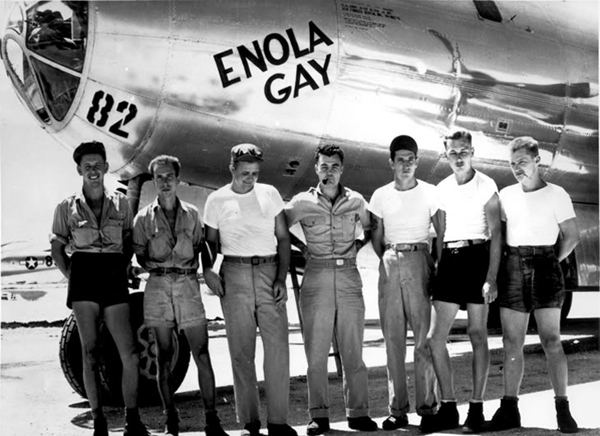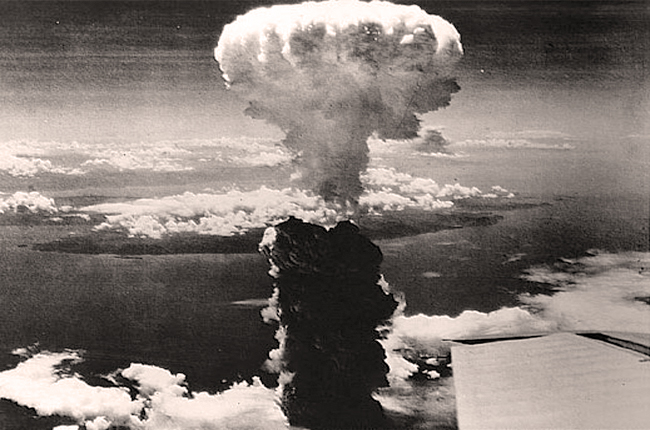This fearsome new weapon had only recently been perfected by a team of thousands working in secret on the Manhattan Project, led by the brilliant, deeply driven physicist, Robert Oppenheimer. When he saw the first successful test of an atomic device on 16 July 1945 in the New Mexico desert, Oppenheimer presciently quoted a Hindu sacred text: “Now I am become death, the destroyer of worlds”.
Three days later a second bomb devastated Nagasaki and the following week, Japan unconditionally surrendered to the Allies.
And yet, it was near happenstance that Hiroshima became the first target of a nuclear explosion in warfare. Six years earlier, a group of refugee scientists (mostly Jewish researchers led by Leo Szilard who had been forced to flee Europe ahead of the concentration camps) prevailed upon Albert Einstein to write to president Franklin Roosevelt. Einstein was the world’s superstar scientist and people like Leo Szilard felt only he could make an adequate impression on Roosevelt.

Photo: Albert Einstein and Robert Oppenheimer. (LIFE)
Einstein agreed to sign a note on 2 August 1939 that would call Roosevelt’s attention to developments in German science that indicated its physicists were making real strides in atomic research that could lead to a Nazi A-bomb - and its baleful consequences for the world. In the end, Einstein’s letter was sufficient to provoke the US to speed up nuclear research and, when the country entered World War II after the Japanese attack on Pearl Harbour, became the impetus for the Manhattan Project.
The irony was that the German scientists had done their sums wrong - their bomb almost certainly would have been a dud, even if they had pursued it with typical Teutonic thoroughness. Moreover, Germany surrendered before the American bomb was ready for action. But, in the meantime, the bitter, savage fighting across the Pacific towards the Japanese home islands, island by island, fed a deep prejudice towards the Japanese that became an almost visceral hatred of anything Japanese.
In the weeks after Germany’s defeat, and the grim casualty statistics of the assault on Okinawa were fully digested, American commanders were brought up short as they thought about how they could justify the loss of yet another quarter of a million soldiers that would happen through the invasion of the Japanese main islands. In fact, the military had become dependent on statistical methodologies. They had become a key tool for evaluating air raid effects, determining military logistics and resupply patterns, and producing projections of troop requirements and losses. (There is, in fact, dispute about what the exact casualty projections of invading Japan would be – some said 50,000 others five times that.)

Photo: Enola Gay crew, with commander Colonel Paul W. Tibbets, Jr.in the middle.
But, whatever the number was, after four years of war, it seemed just too much to pay. The A-bomb seemed just the deus ex machina needed to end it all. Sort of a “one bomb, one surrender” solution. And, depending on which historian you read, perhaps a shot across the bow of the Russians to let them know who was in charge.
And this is where the tale diverges. For Americans, the A-bomb was the logical culmination of a pattern of a nationally mobilised industrial warfare that began during the Civil War bringing the fruits of research and science and enormous productive capacity to bear on otherwise intractable military problems. The bomb, when it was loaded into the “Enola Gay”,the name painted on the nose of the B-29 Superfortress bomber, became the sword to help Americans avenge Pearl Harbour, the ignominious Bataan surrender and the prisoners’ death march, and all those other early defeats in the Pacific – plus the sacrifices that followed, year on year.
But, for the Japanese, it became the moment that opened a door to the country’s first-ever military surrender to a foreign power. For many it seemed quite literally to have come out of the blue, without warning. Their storyline of World War II had something of a blank space after the country’s early victories. Hiroshima and then Nagasaki seemed something that just happened to them, transforming their national narrative from that of an all-conquering land into one that became a unique moral witness to the potential horrors of a future global atomic holocaust.
Watch: The original Hiroshima and Nagasaki video
type="application/x-shockwave-flash">




 Seventy-five years on from that August morning in Hiroshima, humanity seems neither wiser nor more foolish about the bomb. Just spiritless, says the writer.
Seventy-five years on from that August morning in Hiroshima, humanity seems neither wiser nor more foolish about the bomb. Just spiritless, says the writer. 
